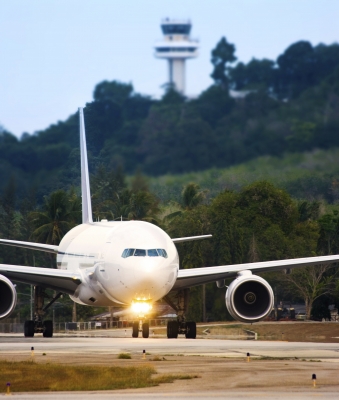As election season whips into full swing, “the rich” and private jets have continued be a source of great debate. During the recent deficit debate one of the targets were private jet owners. The debate involved eliminating the accelerated depreciation on corporate jets that was part of the administration’s own stimulus package.
Private Jets Mean Employment
Forget the fact that the general aviation industry employs 1.2 million people and generates $150 billion in revenue annually; or that Cessna and Gulfstream alone employ people in 15 cities nationwide. You should be concerned because the proposed tax increase on jet owners could impact you. Yes, you. While private jets appear to be the toys of the rich and famous, you or your children might use one someday. Really. Your life is full of amenities previously reserved for the super-rich.
Your Home
During the 19th century, most people lived in homes measuring approximately 15 feet wide by 30 feet long consisting of one or two rooms. However, the community’s richest residents owned homes measuring between 2200 and 2800 square feet. According to U.S. Census data, by 1973 the average square footage of a home in the U.S. was 1,660 square feet. By 2007, that figure had increased to 2,521 square feet. Do you feel rich yet?
Indoor plumbing, central heat, and electricity were also amenities of the rich when first developed. It’s also not unusual for middle-class families to have household help (in the form of childcare or housekeeping) not previously enjoyed by the masses.
Your Big Screen TV
The first high-quality big screen TVs were developed by Mitsubishi in the late 1970s. Their target market? The super-rich as the price was beyond the reach of 95% of the population.
With the super-rich as early adopters, television manufacturers were able to invest in research and development resulting in better quality, lower cost big-screens. By 1994, Consumer Electronics reported sales of big-screens were outpacing midsize televisions. If you don’t have one, you know someone who does. High-definition and flat-panel TVs, Blu-Ray players, CDs, and computers have all followed similar patterns.
Your Cell Phone
Remember when the super-rich had phones in their cars? Prior to 1973, due to the need to stay on a single cell, mobile phone technology was limited to phones installed in vehicles. Car phones and the first hand-held cell phones were expensive to both buy and operate. Again, we can thank these early adopters for our current smart phones. Early adopters of technology help developers work out the bugs, and improve technology enabling them to create products for a broader market.
Where’s My Jet?
It wasn’t that long ago when flying, even on a commercial airline, was something that could only be afforded by a select few. As recently as the 1970s, airline travel was prohibitively expensive and required you to dress up to get on board. When I was a child, flying was something “other people” did, not us. Today, my adult children think nothing of hopping on an airplane for a weekend of gambling in Las Vegas or skiing at Telluride. While you don’t necessarily have a private jet yet, you already have better access to air travel than a generation ago. Is it so unreasonable to think the next generation might have increased access to private jets?
Remember when science fiction literature promised us a future full of flying cars? Perhaps that dream will come true in the form of small, private jets. The industry is already changing as a result of significantly increased demand for chartered jets following 9-11. No longer do you have to be independently wealthy, a corporate executive, or a rock star to fly on a private jet. Jets can now be shared either through charter flights or fractional ownership.
While fractional ownership through companies like Flexjet or NetJets will still cost you several hundred thousand dollars for 50 hours, an Internet search found that six people can charter a jet from Los Angeles to Las Vegas for $3,000 round trip. That’s only $500 per person. While this price is a significant premium over the lowest commercial flight I found ($191), it is not outside the reach of many middle-class Americans. I would be willing to pay this premium, at least occasionally, to avoid the full body cavity search offered by the TSA. Deals can also be found on private jets by purchasing one-way “empty legs”. Empty legs are created when the aircraft itself needs to move for some reason such as to pick up it’s owner, return from servicing, or return to base after a charter.
While ownership of large corporate jets might remain, at least for now, the domain of the super-rich, small private jets can be purchased for as little as $1 million dollars. I agree, this is still a lot of money; however, many companies will arrange for shared ownership. With five people owning a small jet the price per person is reduced to $200,000 dollars. While still a significant investment, people buy second homes that cost more than this already. Plus, if demand for the use of private jets increases, there will be incentives for competitors to enter the market and prices will decrease substantially. This makes ownership or leasing more accessible to the middle class.
Should we tax jets?
My advice: Be careful what you tax, it could impact your future.
Photo courtesy of Stuart Miles


It’s long been my suspicion that decisions based on “class warfare” likely aren’t based on principles of strong fiscal stewardship.
I always emailed this weblog post page to all my friends, as if like to read it after that my links will too.
Pingback: The Gold Standard of Posts | Holly Bell's Blog
Pingback: A Kerfuffle Is Not A Breakfast Pastry | Holly Bell's Blog